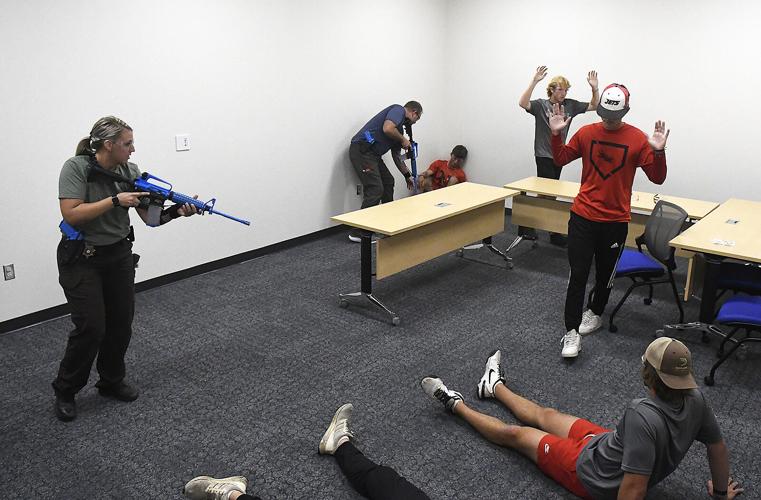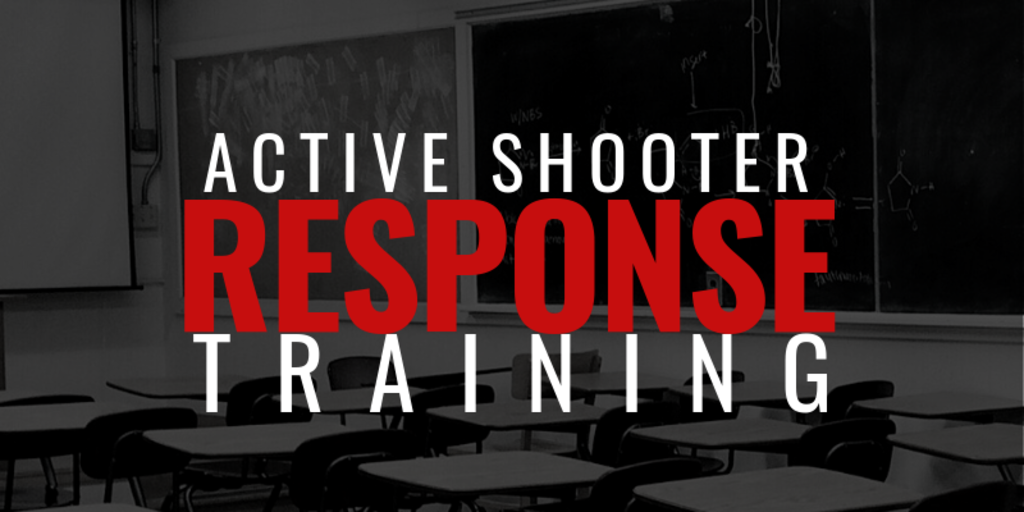Discovering the Key Components and Objectives of Efficient Energetic Shooter Training Programs
Energetic shooter training programs are vital in furnishing people and companies with the essential skills to respond successfully to potential risks. These programs integrate essential components, such as the "Run, Hide, Fight" approach, realistic situation simulations, and communication methods, promoting an atmosphere of preparedness. They stress emotional durability to assist individuals browse high-stress situations. active shooter training. As we explore the ins and outs of these training programs, it comes to be apparent that understanding their thorough nature is essential to enhancing precaution and response abilities. What details components really specify their effectiveness?
Relevance of Active Shooter Training
Active shooter training programs are crucial for boosting readiness and feedback despite potential risks. These programs aim to equip individuals, companies, and communities with the knowledge and skills necessary to efficiently reply to active shooter scenarios. The increasing regularity and seriousness of such cases emphasize the importance of proactive measures, as timely and enlightened responses can substantially mitigate damage.

Additionally, these programs can help reduce the stress and anxiety and worry that typically go along with conversations regarding possible dangers. By providing organized assistance and useful strategies, individuals acquire self-confidence in their capability to react properly. Eventually, the value of active shooter training hinges on its prospective to save lives, reduce injuries, and grow a ready and durable neighborhood efficient in dealing with unexpected obstacles.
Trick Parts of Training Programs
Efficient active shooter training programs typically incorporate a number of crucial components developed to prepare individuals for real-world situations. The very first component is comprehensive education and learning on the nature of energetic shooter events, consisting of statistics, study, and psychological aspects that affect assailants. This theoretical structure is important for cultivating recognition and understanding amongst participants.
Following, programs often include training on personal security steps, emphasizing the "Run, Hide, Battle" strategy. Individuals discover exactly how to evaluate their environment, make quick decisions, and take proper actions during a crisis. Additionally, the addition of efficient communication abilities is essential, as individuals must recognize how to report occurrences and share essential details with legislation enforcement.
Another important component is the involvement of police or safety specialists, that give insights into tactical responses and the significance of teamwork throughout a crisis. Programs need to attend to the mental aftermath of an active shooter circumstance, using strategies for coping and recovery.
Last but not least, continuous training and refresher course programs are critical to guarantee that knowledge remains current and individuals really feel certain in their capabilities. Together, these crucial elements create a well-rounded training program that equips individuals to react successfully i thought about this to an active shooter occasion.
Realistic Situation Simulations
Practical circumstance simulations are a vital aspect of energetic shooter training programs, offering participants with the possibility to participate in hands-on technique that mirrors possible real-life circumstances. These simulations boost the training experience by creating an immersive atmosphere where individuals can use academic expertise in functional settings.
Through the use of role-playing, simulated scenarios, and specialized training facilities, participants experience the instant obstacles and stressors related to an active shooter occurrence. This method of training promotes quick decision-making, team effort, and the application of safety procedures under pressure. It allows -responders to establish important abilities such as situational awareness, danger assessment, and reliable evacuation procedures.
In addition, realistic simulations assist to determine potential weaknesses in participants' actions, making it possible for trainers to provide targeted responses and improve general preparedness. The consolidation of differing scenarios, including different locations and enemy accounts, further enhances the training experience, making sure that participants are well-equipped to manage a variety of prospective scenarios.
Ultimately, these simulations serve not just to instruct but likewise to develop self-confidence among individuals, cultivating a sense of readiness that is crucial for reliable emergency situation feedback despite an active shooter risk. active shooter training.
Communication Techniques in Training
Clear communication is essential in active shooter training programs, as it straight affects the effectiveness of action efforts throughout a crisis. Training participants need to comprehend the procedures and procedures that will lead their actions if encountered with an active shooter scenario. Establishing clear lines of communication makes sure that all people included can pass on details immediately and precisely.

In addition, training programs ought to highlight the importance of active listening - active shooter training. Participants need to be educated to translate and reply to information efficiently, minimizing misunderstandings that can bring about hazardous scenarios. Routine comments sessions post-training can also fine-tune interaction approaches, making certain that all individuals feel equipped to share their experiences and recommendations for enhancement. Ultimately, effective communication strategies are necessary for description preparing people to react decisively and cohesively despite an active shooter occurrence.
Mental Preparedness Techniques
Mental readiness methods are significantly identified as important elements of energetic shooter training programs. These strategies intend to equip people with the mental durability needed to respond efficiently in high-stress situations. By promoting an attitude in harmony with possible dangers, participants can much better manage concern, stress and anxiety, and confusion during important occurrences.
Secret mental preparedness approaches consist of scenario-based training and anxiety vaccination exercises. Scenario-based training immerses individuals in reasonable simulations that resemble the disorder of an active shooter event, allowing them to practice decision-making under stress. This exposure assists build knowledge with emergency situation procedures, boosting natural feedbacks.
Tension shot includes steady exposure to stress-inducing situations, permitting individuals to create coping devices. This can include breathing workouts, visualization techniques, and this link cognitive restructuring to reframe unfavorable ideas. By integrating these techniques, training programs can grow a feeling of confidence and control, which is important in dilemma circumstances.
Additionally, post-incident emotional assistance is essential to address the emotional consequences of an active shooter event. Incorporating mental wellness resources into training programs not just prepares individuals for prompt feedbacks however additionally promotes long-term psychological wellness, eventually adding to a much safer and a lot more resilient setting.
Conclusion

Comments on “Why Active Shooter Training Is Necessary for Workplace Security”